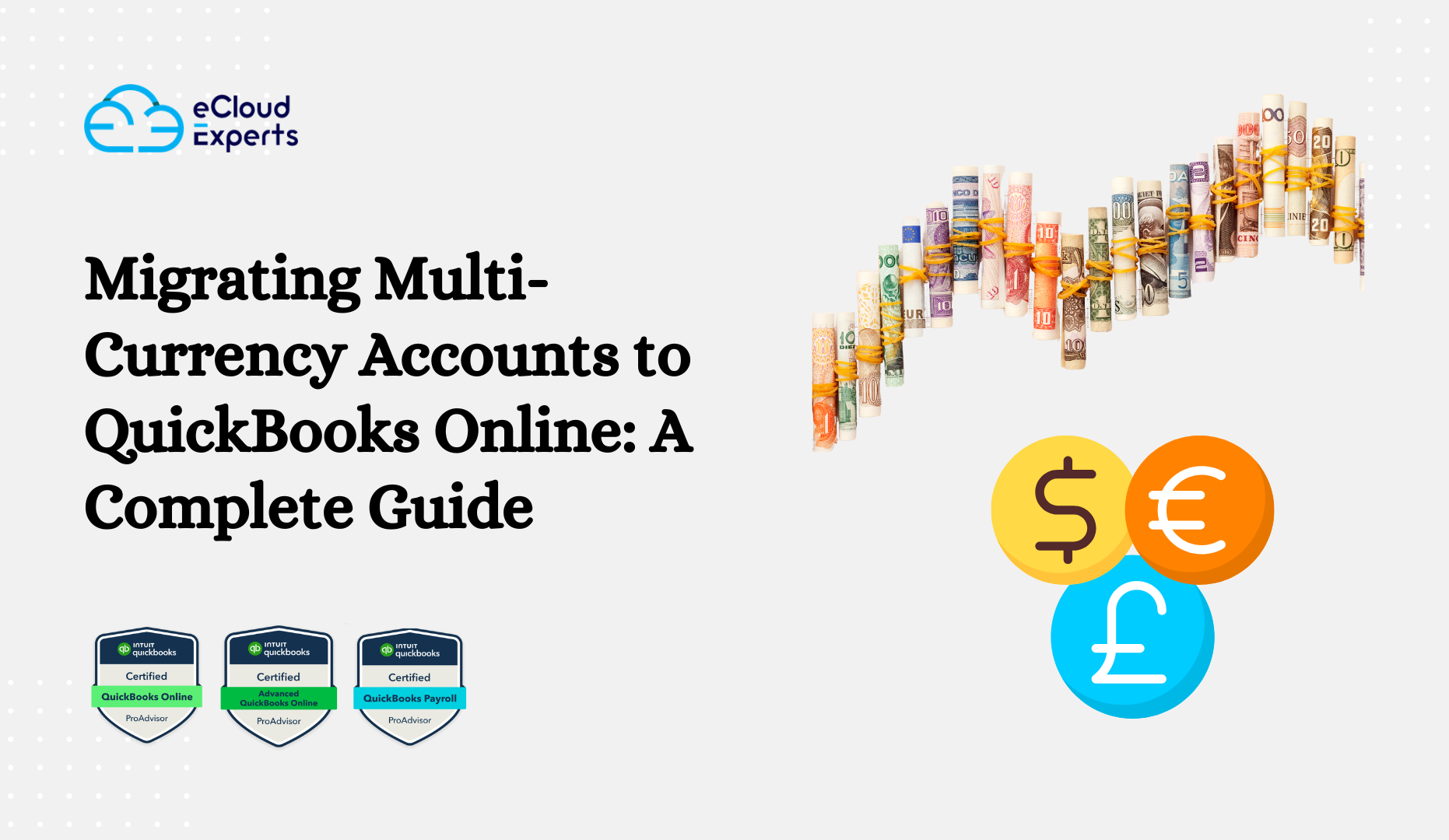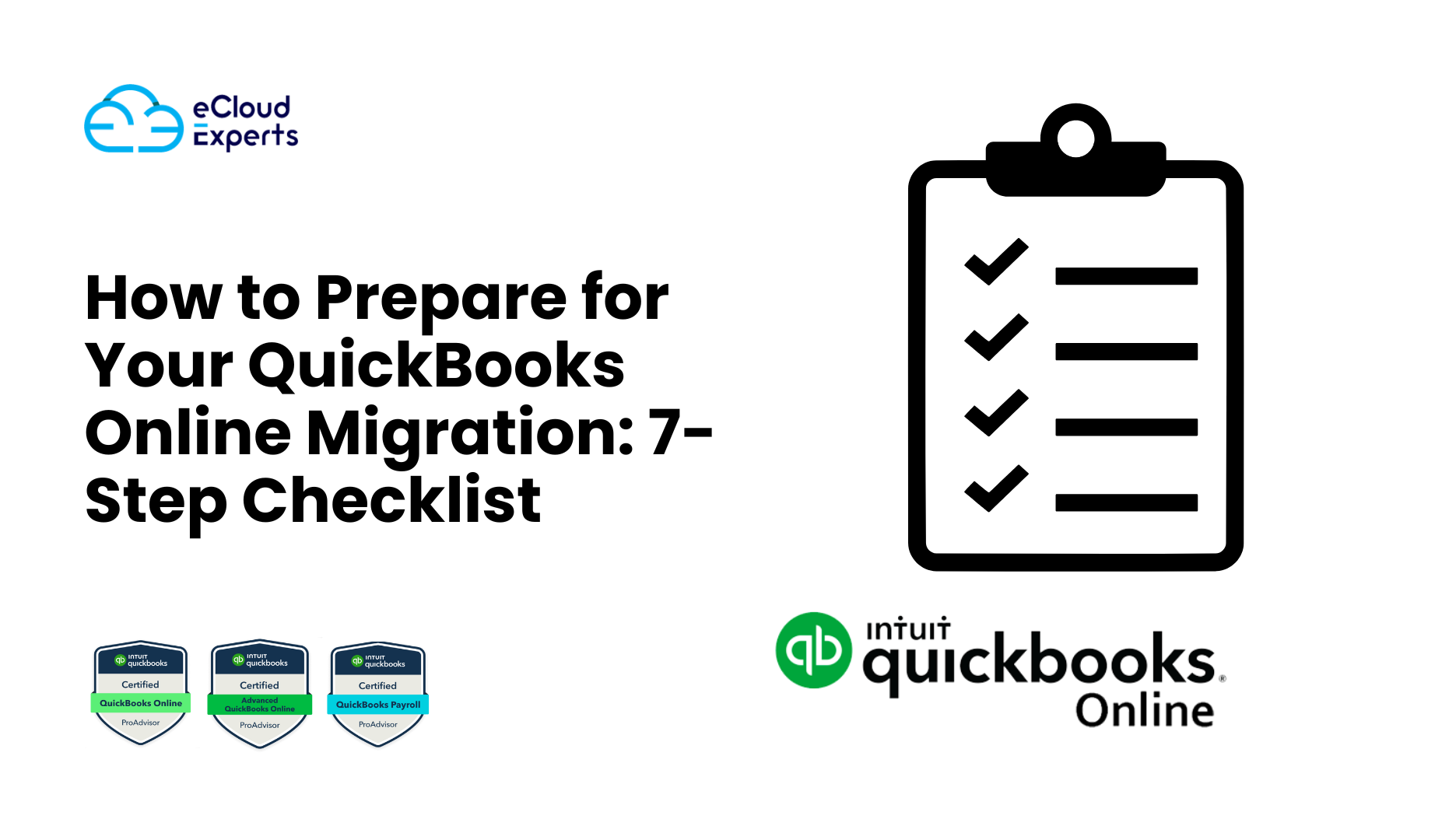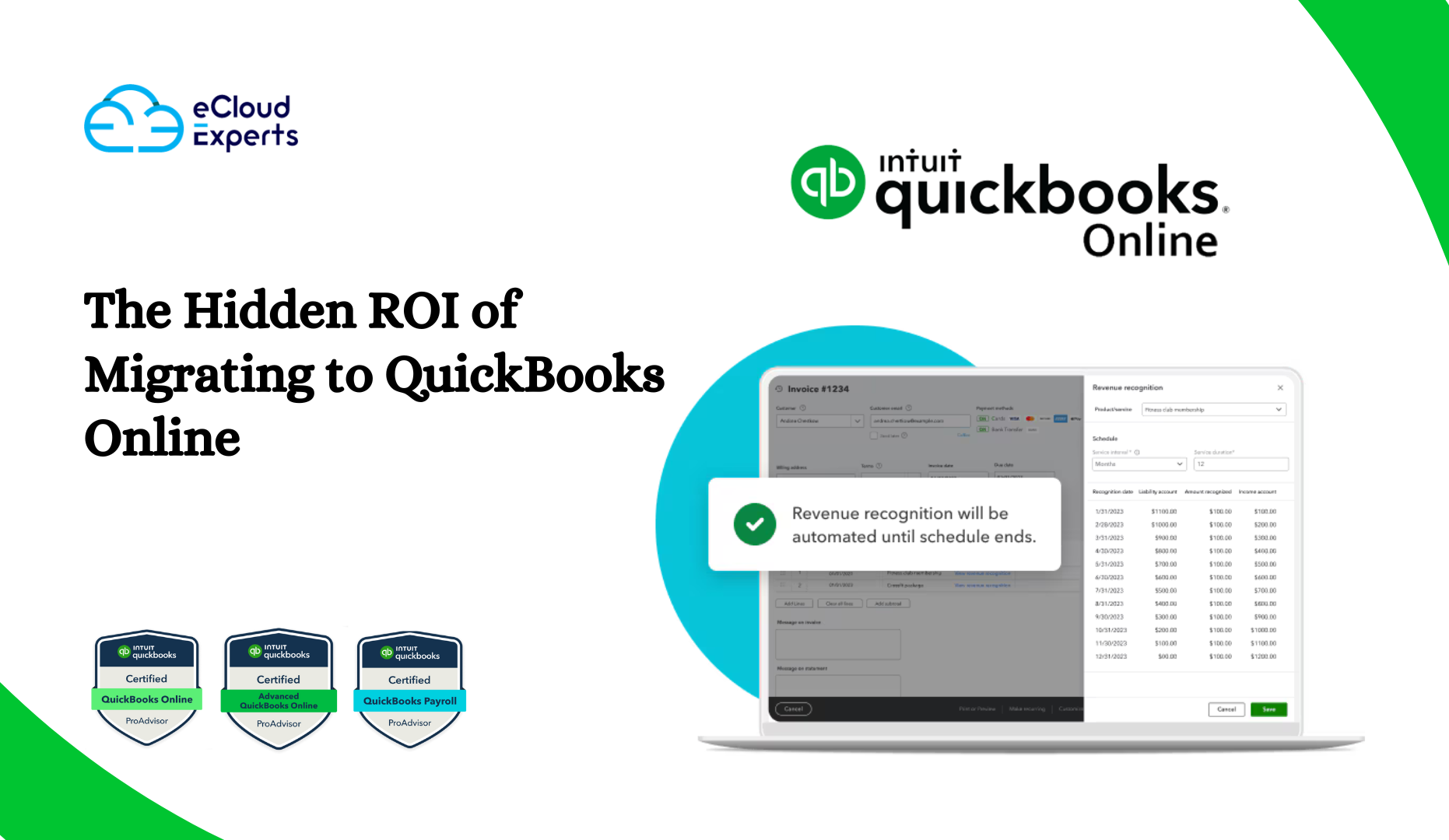Businesses that deal with customers, suppliers, or partners in more than one country know how challenging it can be to keep accounts accurate. Currency conversions, fluctuating exchange rates, and different reporting requirements often make bookkeeping harder than it needs to be. That’s why many international firms are now focusing on multi-currency QuickBooks migration as a way to simplify their accounting.
If your company imports from Europe, exports to the U.S., or manages clients in Asia, you need a system that can handle complex money flows. QuickBooks Online (QBO) is built with these needs in mind. It allows you to invoice, receive payments, and generate reports in multiple currencies without adding confusion to your books. This makes global accounting with QBO more than just convenient—it becomes a critical part of scaling a business across borders.
For UK-based import and export firms, accurate tracking of foreign sales and purchases can make the difference between profit and loss. Moving to QuickBooks Online with the right setup ensures that you don’t just move data, but also gain access to features like live exchange rate updates, automatic revaluations, and clear financial reports. That’s why a multi-currency QuickBooks migration is not simply a technical shift—it’s a strategic upgrade for growth-focused companies.
Another reason many business owners choose QuickBooks Online is its ability to centralize data. Instead of juggling spreadsheets or outdated systems, you can work in one place with real-time insights. For global businesses, this is especially powerful. With QuickBooks Online multi-currency migration, you’re no longer guessing at your financial position in different regions. Instead, you get clarity, consistency, and confidence in decision-making.
In this guide, we’ll walk through everything you need to know—from preparing your accounts for migration to enabling multi-currency, importing data, managing transactions, and avoiding common pitfalls. Whether you’re a small importer or a large multinational, this resource will help you understand how global accounting with QBO can transform the way you manage international finance.
Why Move to QBO for Multi-Currency?
Running a business that deals with international customers or suppliers comes with unique challenges. Currency exchange rates can change daily, and errors in manual conversions often lead to inaccurate financial records. This is where a multi-currency QuickBooks migration becomes highly valuable, especially for companies that want better control and visibility over their finances.
One of the biggest advantages of QuickBooks Online is automation. Instead of manually calculating rates or adjusting balances, QBO updates exchange rates automatically. This ensures that your accounts reflect the most accurate figures possible. For companies working across borders, that accuracy is priceless. When you complete a multi-currency QuickBooks migration, you move away from guesswork and step into reliable financial management.
Another reason to consider QuickBooks Online is its reporting capability. International businesses need to know their financial position across multiple currencies at any time. With QBO, you can run consolidated reports that show income, expenses, and profits in both your home currency and foreign currencies. This is a big win for firms focused on global accounting with QBO, as it allows them to make smart decisions based on real-time data rather than outdated spreadsheets.
QBO also supports international compliance needs. Many UK-based import and export firms face strict requirements when filing reports or preparing accounts for tax purposes. By moving to QuickBooks Online, they can manage VAT in multiple currencies while still keeping everything tied to their home reporting standards. That’s why many firms see QuickBooks Online multi-currency migration not as an option, but as a necessity.
Scalability is another strong point. A company might begin by trading in just two or three currencies, but as it grows, new markets open up. QuickBooks Online supports dozens of currencies, so businesses never have to worry about outgrowing their system. Whether you’re billing clients in euros, paying suppliers in dollars, or reconciling accounts in yen, the platform handles it with ease. For firms managing international accounting with QuickBooks Online, this flexibility supports long-term growth.
Finally, moving to QuickBooks Online reduces the reliance on outdated desktop systems or complex manual workarounds. Instead, everything is cloud-based, secure, and accessible from anywhere. For international businesses with staff or partners in different regions, this makes collaboration much easier. In short, a multi-currency QuickBooks migration doesn’t just save time—it sets your business up for smarter decisions, stronger compliance, and greater financial clarity.
Prerequisites Before Migration
Before starting a multi-currency QuickBooks migration, it’s important to prepare your accounts properly. Many businesses skip this step and face problems later, such as missing balances, errors in exchange rates, or incomplete records. Getting things right from the start ensures a smoother move into QuickBooks Online.
Here are the key checks to make before you begin:
- Check your QuickBooks Online subscription
Multi-currency is only available in Essentials, Plus, and Advanced versions. If you’re on Simple Start, you won’t be able to activate the feature. For a successful QuickBooks Online multi-currency migration, confirm your plan in advance to avoid surprises. - Back up your data
Once multi-currency is enabled, it cannot be turned off. Every mistake carries long-term consequences. Always back up your data first. Businesses doing global accounting with QBO should save copies of their files through third-party apps or simple exports. - Review accounts, customers, and suppliers
International businesses often have duplicate or inactive records. If these carry over, reconciliation becomes difficult. Clean your data before migration so migrating multi-currency accounts to QBO is smoother and more reliable. - Decide which currencies you need
QuickBooks supports dozens of global currencies, but activating them all creates unnecessary clutter. Focus on those you use most, such as GBP, USD, and EUR. Later, you can add more as the business expands. This keeps international accounting with QuickBooks Online organized and efficient.
Taking these steps before migration may seem time-consuming, but they save businesses from major headaches later. With the right subscription, clean data, proper backups, and only the necessary currencies activated, a multi-currency QuickBooks migration becomes less about fixing mistakes and more about building a strong foundation for long-term success.
Step-by-Step: Enabling Multi-Currency in QBO
Once you’ve confirmed your plan, cleaned your data, and backed up your files, you’re ready to enable multi-currency in QuickBooks Online. This stage of a multi-currency QuickBooks migration is crucial because activating the feature is permanent—it cannot be switched off once turned on. Following the correct steps helps avoid costly mistakes and ensures your system is set up for accurate reporting.
Here’s how to get started:
- Log into QuickBooks Online and open settings
Go to the gear icon at the top right, select Account and Settings, and then choose the Advanced tab. This is where you can turn on multi-currency. - Enable the multi-currency option
Under Currency, you’ll see the option to enable multi-currency. Check the box to turn it on. QuickBooks will warn you that this setting cannot be undone. Review the warning carefully before confirming. This step marks the real beginning of your QuickBooks Online multi-currency migration. - Set your home currency
Every company file in QBO must have a home currency. For UK-based firms, this is typically GBP. Make sure you select the correct home currency because it will be the base for all financial reporting. Businesses managing global accounting with QBO must get this right to avoid confusion in consolidated reports. - Add the currencies you need
After setting the home currency, you can add foreign currencies from the list QuickBooks provides. For example, you may add USD, EUR, or JPY depending on your international trading partners. Adding only what you need at first keeps things simple and avoids clutter. Later, you can expand as your business grows. For those migrating multi-currency accounts to QBO, this step ensures you’re ready to handle real-world transactions. - Assign currencies to customers and suppliers
Once currencies are added, you must link them to the right customers and suppliers. For example, a supplier in the U.S. can be set to USD while a European client can be set to EUR. From then on, all their invoices, bills, and payments will automatically use that currency. This is a key part of building efficient international accounting with QuickBooks Online. - Update your chart of accounts
When creating or editing accounts, you can specify the currency. For instance, you might open a USD bank account to manage payments from American clients. By doing this, QuickBooks Online keeps balances and exchange gains or losses accurate. This is where a multi-currency QuickBooks migration really begins to save you time. - Check exchange rates and revaluations
QuickBooks pulls in live exchange rates daily. However, you can also enter your own if needed. This helps when reconciling accounts or managing large international contracts. Businesses with QuickBooks global clients often rely on this feature to keep transactions aligned with their financial agreements.
Pro Tips for a Smooth Setup
- Double-check your home currency before enabling multi-currency—changing it later isn’t possible.
- Keep your initial list of currencies short; too many can create confusion.
- Test a few sample transactions in different currencies to ensure everything works as expected.
By carefully following these steps, you set the foundation for accurate, reliable multi-currency use in QuickBooks Online. Instead of worrying about manual conversions or errors, your business gains control and clarity. For companies managing global accounting with QBO, this stage is where the benefits of modern cloud software begin to shine. A well-executed multi-currency QuickBooks migration ensures your system is ready to support future growth, international expansion, and better financial decision-making.
Importing Existing Multi-Currency Data
Activating multi-currency in QuickBooks Online is only half the journey. The real challenge for many companies is importing their existing financial data into the new system. This is where careful planning makes the difference between a smooth multi-currency QuickBooks migration and months of fixing errors.
Understand the Data That Moves Across
When migrating, not all historical information comes across perfectly. For example:
- Home currency adjustments in QuickBooks Desktop often do not carry over directly.
- Certain transaction details may require manual entry or reconciliation.
- Exchange rate history may not fully transfer.
Knowing these limits helps you prepare in advance. Businesses focused on global accounting with QBO must decide how much history they need and whether some adjustments will need to be recreated manually.
Use Third-Party Migration Tools When Needed
Some firms attempt to handle the entire process manually, but that can be risky. Dedicated migration tools or professional services ensure greater accuracy. For example:
- Tools can convert complex foreign balances into the right format.
- Data can be validated before it is uploaded to QBO.
- Reports can be cross-checked to confirm balances match.
For companies handling QuickBooks Online multi-currency migration, professional support reduces the chance of errors and saves time.
Organize Customers, Suppliers, and Accounts Before Import
Every record imported into QuickBooks needs to be linked to the correct currency. That means reviewing each customer and supplier in advance and assigning them to the right currency. Without this step, invoices and bills may default to the home currency, creating reconciliation problems later. This is particularly important for UK import and export firms managing high volumes of international trade.
Test Before Going Live
A common mistake is importing everything at once without testing. Instead, start small. Import a limited set of multi-currency data and check:
- Do the balances match your old system?
- Are invoices appearing in the correct currency?
- Is the exchange rate applied correctly?
By testing before full migration, migrating multi-currency accounts to QBO becomes much safer and easier to manage.
Final Checks After Import
Once all data is in QuickBooks Online, run reports in both home and foreign currencies. Confirm totals match your expectations. Businesses with QuickBooks global clients should also reconcile key accounts right away.
Handled properly, importing data into QuickBooks Online ensures you don’t just activate multi-currency—you make it work for your real-world business needs. With the right planning, testing, and professional tools, a multi-currency QuickBooks migration delivers reliable results that support growth, accuracy, and confidence in your accounts.
Managing Transactions Post-Migration
Once your data is imported, the next challenge is managing day-to-day transactions in QuickBooks Online. This is where a multi-currency QuickBooks migration shows its real value, because it transforms the way invoices, bills, and payments are recorded across currencies.
Invoicing and Receiving Payments
QuickBooks Online lets you issue invoices in a customer’s assigned currency. For example:
- A client in the U.S. can receive an invoice in USD.
- A supplier in Germany can be billed in EUR.
- Payments are automatically tracked in that foreign currency and converted back into your home currency for reporting.
This automation ensures your books stay accurate without constant manual conversion. For businesses doing global accounting with QBO, this feature saves hours each month while reducing human error.
Handling Bills and Supplier Payments
Just like customer invoices, supplier bills can also be managed in their native currency. When you pay a vendor in USD, QuickBooks automatically records the exchange difference in your GBP books. This is a crucial benefit of QuickBooks Online multi-currency migration, as it keeps both sides of the transaction correct.
Bank Accounts and Foreign Balances
If your business holds multiple bank accounts in different currencies, QuickBooks allows you to link each account directly. For example:
- A USD account for American clients.
- A EUR account for European trade.
- A GBP account for domestic operations.
Each account tracks balances in its own currency, while QuickBooks converts totals for consolidated reports. This setup makes migrating multi-currency accounts to QBO practical for companies with complex global operations.
Reconciling Transactions
Reconciliation in a multi-currency environment can be tricky, but QuickBooks helps by:
- Updating exchange rates daily.
- Recording gains and losses automatically when payments clear.
- Letting you override exchange rates when contracts use fixed terms.
For businesses with QuickBooks global clients, this makes monthly closing far more efficient.
Common Issues to Watch
Even with a smooth setup, some challenges remain:
- Rounding differences due to fluctuating rates.
- Delayed updates when banks post transactions at slightly different rates.
- Duplicate entries if old records weren’t cleaned before migration.
By monitoring these areas closely, you can prevent errors from growing into bigger reconciliation problems.
Why This Stage Matters
Managing transactions properly is the heart of a multi-currency QuickBooks migration. Without accurate transaction handling, even the best setup loses value. For UK import/export firms and international businesses, QuickBooks provides the tools to keep financial data reliable across markets. With international accounting in QuickBooks Online, you not only gain transparency—you gain the confidence to expand into new regions knowing your books can keep up.
Reporting and Currency Revaluation
After completing a multi-currency QuickBooks migration, reporting becomes one of the biggest advantages. Instead of struggling with spreadsheets or manual conversions, QuickBooks Online gives you clear, accurate reports across both your home and foreign currencies.
Multi-Currency Reporting Tools
QuickBooks provides several built-in reports tailored for international businesses. These include:
- Balance Sheet and Profit & Loss reports that show amounts in both home and foreign currencies.
- Customer and Supplier reports to review outstanding balances by currency.
- Foreign Currency Translation reports that display how exchange rates affect overall results.
For companies focused on global accounting with QBO, these reports make it easy to see the financial health of the business across markets.
Currency Revaluation
Exchange rates are always changing. To keep your books accurate, QuickBooks allows you to run revaluations on foreign balances. This process updates account values to reflect current exchange rates. For example:
- A USD receivable recorded last month might now be worth more or less in GBP.
- Revaluation ensures your financial statements match today’s values.
This feature is especially important for firms with QuickBooks global clients, because it prevents exchange differences from distorting profits.
How Revaluation Works in Practice
Running a revaluation creates adjustment entries in QuickBooks. These entries reflect gains or losses from currency movement. Over time, this helps businesses:
- Present accurate financial statements.
- Comply with reporting standards.
- Avoid surprises during audits.
For companies migrating multi-currency accounts to QBO, understanding this process is vital. Without revaluation, foreign balances quickly become misleading.
Pro Tip: Schedule Regular Checks
Businesses handling international accounting with QuickBooks Online should revalue balances regularly—monthly, or even weekly for high-volume operations. This ensures reports always reflect reality, not outdated numbers.
Why It Matters
The ability to run reports and manage revaluations is what separates QuickBooks Online from older systems. A successful multi-currency QuickBooks migration doesn’t just move your data—it gives you the tools to keep that data accurate over time. For growth-focused companies, reliable reporting translates into better planning, stronger compliance, and more confident decision-making.
Best Practices & Common Pitfalls
Even after a smooth multi-currency QuickBooks migration, success depends on how you manage the system going forward. Many businesses face issues because they overlook simple details. Here are the best practices to follow, along with the pitfalls to avoid.
Best Practices for Multi-Currency in QuickBooks Online
- Double-check your home currency before enabling multi-currency
Once you switch it on, you cannot change the home currency. Getting it wrong can create lasting reporting errors. This step is critical for migrating multi-currency accounts to QBO successfully. - Keep your list of currencies focused
Add only the ones you use regularly. Too many active currencies create clutter and confusion. Firms doing global accounting with QBO benefit from keeping their setup clean. - Reconcile accounts regularly
With exchange rates changing daily, it’s important to reconcile foreign balances often. Regular checks ensure your QuickBooks Online multi-currency migration continues to produce accurate results. - Train your team
Employees entering invoices or bills must understand how to assign the correct currency. Proper training avoids mistakes that can ripple across reports. - Run revaluations frequently
Schedule monthly or weekly revaluations depending on transaction volume. This keeps financial statements accurate for businesses handling international accounting with QuickBooks Online.
Common Pitfalls to Avoid
- Activating multi-currency without preparation
Some companies rush in without backups or data review. Once errors are in the system, they’re difficult to fix. Careful planning avoids setbacks in a multi-currency QuickBooks migration. - Ignoring inactive or duplicate accounts
If old customer or supplier records are migrated, they can distort balances. Cleaning data before migration prevents reconciliation headaches. - Overlooking feature limitations
Enabling multi-currency can disable certain QuickBooks features, like the Cash Flow Planner. Businesses with QuickBooks global clients should know these trade-offs before switching. - Failing to test before going live
Importing all data at once without testing is risky. Always run a small batch first to confirm that transactions, exchange rates, and reports look correct.
Why Best Practices Matter
By following these guidelines, businesses ensure their multi-currency QuickBooks migration continues to support growth rather than create new problems. The goal is not just to migrate but to maintain accuracy, compliance, and efficiency over the long term. For UK import/export firms and global businesses, these best practices make QuickBooks Online a reliable foundation for expansion.
Conclusion
A successful multi-currency QuickBooks migration is more than just moving data—it’s about giving your business the tools to manage international trade with accuracy and confidence. From enabling multi-currency in QuickBooks Online to importing existing balances, setting up foreign accounts, and reconciling daily transactions, every step plays a role in building a system that works for global operations.
For companies in the UK import and export market, accuracy in foreign currency reporting is non-negotiable. With features like live exchange rates, currency revaluations, and consolidated reporting, global accounting with QBO ensures your books stay reliable no matter how many markets you operate in.
The journey doesn’t end with migration. Ongoing best practices—such as reconciling accounts, training your team, and reviewing reports—make sure your system continues to deliver value. Businesses with QuickBooks global clients will find that these steps provide the clarity needed for expansion.
In short, a multi-currency QuickBooks migration positions your company for growth. With international accounting in QuickBooks Online, you gain not only efficiency but also the confidence to make smarter decisions across borders.







